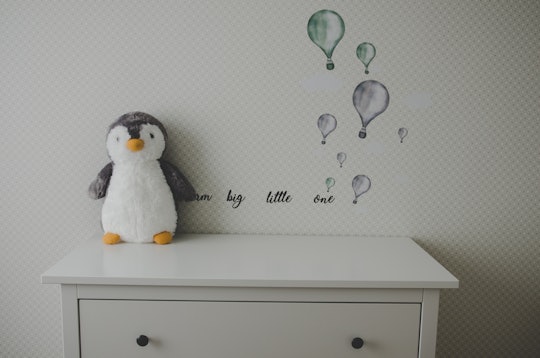Life

When planning your baby's nursery, there are so many decisions to make, from what crib to buy to whether or not you should put a Diaper Genie on your registry (you should). Another thing you may want to consider is how to create a calm feng shui atmosphere in baby's nursery. The ancient geomantic practice was developed over 3,000 years ago in China, and reveals how to balance the energies of your home to assure health and happiness for those that live there based on colors and spatial arrangements. Feng shui (pronounced "fung shway") literally means "wind" and "water" when translated, and in Chinese culture, these elements are associated with good health and prosperity. As a result, having good feng shui has come to mean feeling at peace in your home. And when it comes to baby's nursery, that means a bedroom that will promote strong growth and optimal sleep for your little one.
But how does it actually work, and how can you incorporate this philosophy by moving furniture around or choosing paint colors? In an interview with Romper, Donna Stellhorn, a Feng Shui expert, astrologer and best-selling author, offers her expertise on the subject. Here are five items to consider when creating a peaceful feng shui atmosphere in your baby's nursery: color, decor, lighting, crib placement and clutter.
1
Color
In creating a calm feng shui atmosphere in your baby's nursery, the color scheme is an important factor, as mood, emotion, and energy are often affected by color. Soothing, muted, and restful color combinations like green and blue, white and beige, or pink and yellow encourage sleep, while bright colors like red or orange are considered active colors that could keep your baby awake.
Stellhorn tells Romper, "Pale pinks and baby blues have been used in the past to denote gender. Thank goodness this old fashion idea is passing away. What's interesting is that pale pink can make us feel more passive, and blue can encourage communication. In decades past, parents would say their little girls in the pale pink room were sweet and quiet while their boys in the blue room were active and talkative. Yellow is associated with memory and good feelings, and this could make for a happy baby who learns language quickly. Green is for health and growth, a good choice for a preemie."
2
Decor
As feng shui is rooted in natural elements, it's important to choose wood and natural materials over plastic when purchasing furniture, toys, and decor (natural materials include cotton, silk, linen, and bamboo). In choosing bedding, window treatments, rugs, and even furniture and toys, look for moving and flowing designs that represent the water element in feng shui.
Additionally, when choosing decor, Stellhorn suggests, "Keep in mind the story it's telling. There's a theory that the fairy tale you liked the most as a child is what you grow up to live. A little girl with Cinderella or Snow White on the walls may grow up to be one who waits to be rescued. A baby boy surrounded by trucks at an early age may not feel as connected to people when he grows up. You may not know what direction your child's life will take, but everyone benefits from being able to think creatively and solve problems. These days, more than ever before, there are story and TV characters who choose adventure, inclusiveness, growth, and find solutions. These make good role models."
3
Lighting
In creating a feng shui nursery, the key word when it comes to lighting is "natural." Practitioners suggest utilizing natural light whenever possible. However, when it's time for bed, make the room dark. Stellhorn says, "Remember, there was no light in the womb. Your newborn is more used to darkness than light. This will change as they get older, of course, and then you can add a night light." The feng shui expert also notes that in following feng shui, a general rule is not to hang anything heavy over the crib or have heavy things near the crib, which includes lighting.
4
Crib Placement
Where you put your baby's crib is a very important part of achieving good feng shui. "The number one rule is to not place the crib next to any tall, heavy pieces of furniture. Also, avoid placing the crib in the center of the room," Stellhorn says. "It can be difficult to sleep if something can come at you from any direction. The infant will feel more comfortable sleeping next to a solid wall on at least one side of the crib. If you can place the crib in the corner, so there are two walls, it's even better. And of course, if the crib can be placed against a solid wall (one without a window) and in view of the mother or parents, that's really great."
5
Buh-bye Clutter
Ideally, we all want our homes to be free of mess and clutter, and this same thinking should be applied to your baby's nursery. Laura Benko, author of The Holistic Home, noted on her website that clutter isn't just visually hard to look at — "It's an energetic anchor that impedes the best things from unfolding in our lives. An excessive amount of clutter stops us from having clarity of thought, and can weigh us down emotionally." To achieve this in baby's room, keep toys and other items in baskets and storage bins, rather than having them displayed or left out in the room.
This article was originally published on